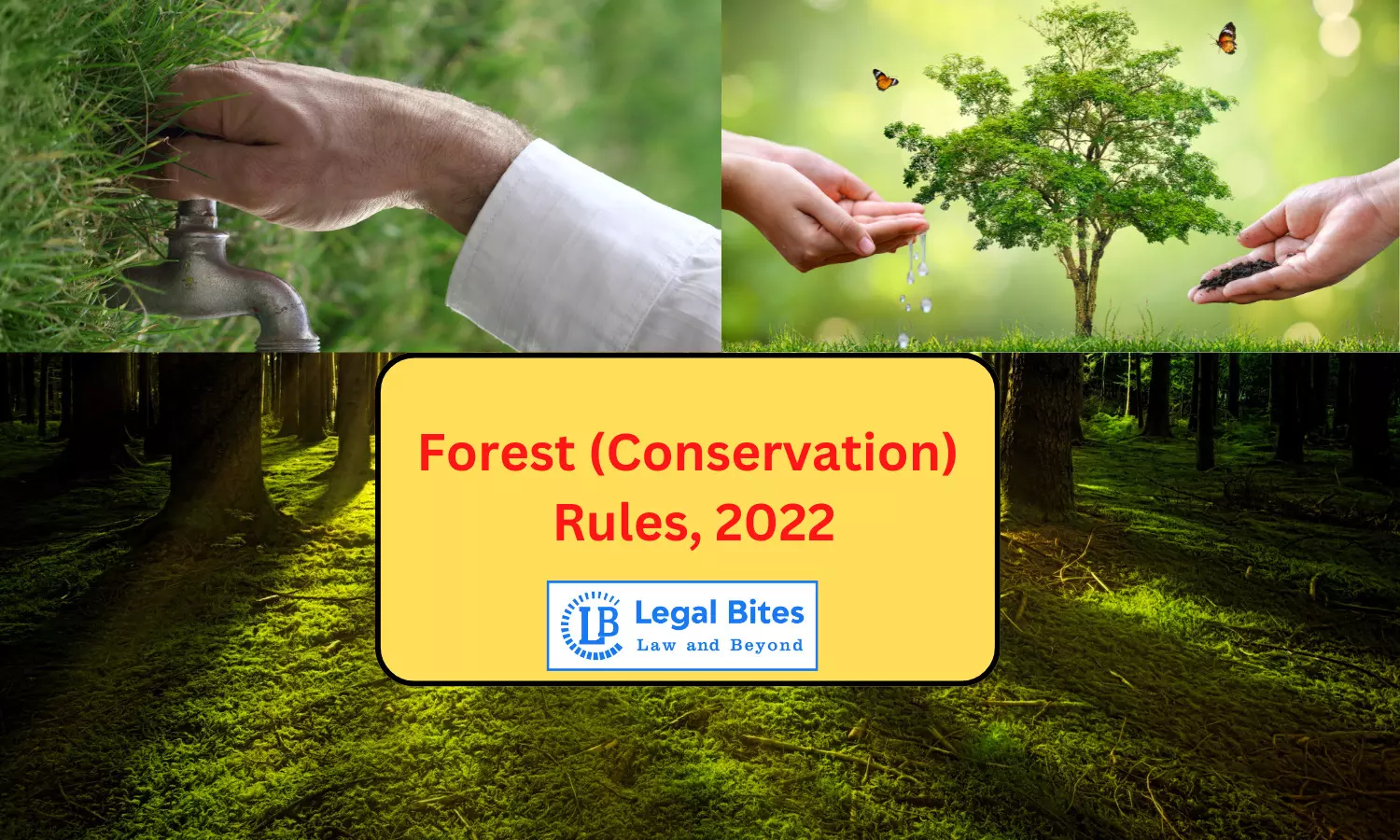Forest (Conservation) Rules, 2022
The Article 'Forest (Conservation) Rules, 2022' by Radhika Mittal includes the aim and objectives of the Forest Conservation Rules, 2022, the changes made, and the government's stand on the Forest Conservation Rules, 2022.

The Article 'Forest (Conservation) Rules, 2022' by Radhika Mittal includes the aim and objectives of the Forest Conservation Rules, 2022, the changes made, and the government's stand on the Forest Conservation Rules, 2022. Forest holds a vital position for life on this earth. The importance of forests cannot be underestimated. They are essential for our survival. Therefore, the forest needs to be protected and conserved. This article will explain in detail the Forest Conservation Rules, 2022.
Introduction
The Ministry of Environment, Forest and Climate Change has, recently, notified the Forest (Conservation) Rules, 2022. These rules are notified under Section 4(1) of the Forest (Conservation) Act, 1980 which authorizes the Central Government to make rules to carry out the provision of the Forest (Conservation) Act, 1980. The Forest (Conservation) Rules, 2022 will replace the Forest (Conservation) Rules, 2003.
Aim And Objectives
The Forest (Conservation) Rules, 2022 seeks to achieve the following aims and objectives: -
• To implement the provisions of the Forest (Conservation) Act, 1980.
• To protect, conserve and integrate the forest.
• To sustain an ecological balance between flora and fauna.
• To establish various committees for performing specific functions.
• To lay down the procedural framework for obtaining consent from the central government to use forest land for non-forest purposes.
Rules
1. Establishment of Committees
The Forest (Conservation) Rules, 2022 provides for the establishment of the following committees for performing specific functions. These committees are:
a) Project Screening Committee
• This committee is to be established in each State and Union Territory.
• It shall meet at least twice a month.
• It shall examine the proposals received from the state government or union territory without going into the merit of the proposal.
• It shall review the proposals that involve the diversion of forest land.
• It shall advise the state government on the projects.
b) Regional Empowered Committee
• This committee is to be established in each regional office and would be set up by the central government.
• It shall meet at least twice a month.
• It shall examine every referred project for approval or rejection.
c) Advisory Committee
• This committee is to be set up by the central government.
• It shall meet once a month.
• It consists of 6 members including the chairperson, official and non-official members.
• It shall advise and recommend the central government with regard to the grant of approval.
2. Compensatory Afforestation
The Forest (Conservation) Rules, 2022 aims to make land available for compensatory afforestation easier. According to Section 2(e) of The Forest (Conservation) Rules, 2022, Compensatory Afforestation means "afforestation done in lieu of the diversion of forest land for non-forest purpose."
However, it is necessary to ensure that this compensatory plantation offers the same ecological features and services as the diverted natural forest.
The compensatory afforestation will be allowed in other states with a forest cover of less than 20% in case the state has
• 2/3rd (66%) under the green cover or
• 1/3rd (33%) under forest cover.
The Supreme Court in the case of the TN Godhavarman Thirumulpad v. Union of India, WP (Civil) No. 202 of 1995, ordered the creation of the Compensatory Afforestation Fund. Thereafter, The Compensatory Afforestation Fund Management and Planning Authority (CAMPA) Act, 2016 was enacted which provides for the establishment of National and State Fund to ensure that diversion of forest land results in afforestation in some other places.
Changes Made
The New Forest (Conservation) Rules, 2022 state that the responsibility of settling forest rights and diversion of land lies with the state government after the final approval of the central government. This goes against Gram Sabha's decision under the Forest Rights Act, 2006 which is the authority to initiate the process for determining the nature and extent of individual or community forest rights.
The New Forest (Conservation) Rules, 2022 changed the rule of penalty. It replaced imprisonment as a monetary penalty for less serious offences. However, serious offences would be governed by the Indian Penal Code, 1860.
Government's Position
The Forest (Conservation) Rules, 2022 lay down the procedural framework for obtaining prior approval from the central government for use of the forest land for non-forest purposes. As per the provisions of the Forest (Conservation) Act, 1980 the prior approval of the central government does not directly lead to non-forestry use of land. It was after the issuance of the final order from the State Government or the Union Territory concerned that authorizes the use of forest land for the intended purpose.
However, the Provisions of Forest (Conservation) Rules, 2022 under Rule 9(6)(b)(ii) emphasizes the compliance of the provisions of all acts and rules. It authorizes the state government and union territory administration to issue:
i. Order of diversion,
ii. Assignment of the lease, or
iii. De-reservation,
after receiving
i. the final approval of the central government under section 2 of the act, and
ii. after fulfillment and compliance of the provisions of all other acts and rules made there under, as applicable, including ensuring settlements of rights under the Schedule Tribes and Other Traditional forest dwellers (Recognition of Forest Rights) Act, 2006.
Conclusion
The New Forest (Conservation) Rules, 2022 provides for a time-bound approval of the projects by constituting a number of committees at each level and thus, streamlining the entire procedure of obtaining approval for the diversion of forest land for non-forest purposes. However, the traditional tribal rights of the forest dwellers are reduced over the forest land which makes it a step back to sustainable development. A balanced approach is necessary to ensure that tribal rights are secured and inclusive development takes place.
References
1. Forest Conservation Rules, Available Here
2. The Forest (Conservation) Act, 1980, Available Here
3. Indian Penal Code, 1860, Available Here

